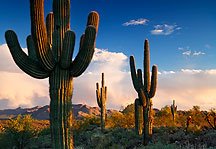 After 120 years of failed efforts for a real regional mass transit system, with the last 40 years considering a bona-fide light rail system fraught with political bickering, recessions, budget mismanagement, and seemingly any other sort of unforeseeable delay, it's finally arrived to Seattle.
After 120 years of failed efforts for a real regional mass transit system, with the last 40 years considering a bona-fide light rail system fraught with political bickering, recessions, budget mismanagement, and seemingly any other sort of unforeseeable delay, it's finally arrived to Seattle.Light rail makes its debut to the Seattle public this Saturday, July 18.
The system stretches from Westlake Center in downtown Seattle south to Tukwila (see below)...and in December a 1.7 mile segment will open up so passengers will be able to reach Sea-Tac Airport. What opens this year is the initial segment of a larger system that's funded for linking Lynnwood, Federal Way and Bellevue by 2023, with the long-range plan of linking Everett, Tacoma, Redmond, and possibly more areas beyond that.
 Moreover, this eventual regional system will work with a current South Lake Union Streetcar...or Trolley (also lovingly referred to as the SLUT...as in "I'm gonna ride that SLUT twice a day, everyday..."), part of a developing Seattle streetcar network (also rail-based) to serve individual local neighborhoods.
Moreover, this eventual regional system will work with a current South Lake Union Streetcar...or Trolley (also lovingly referred to as the SLUT...as in "I'm gonna ride that SLUT twice a day, everyday..."), part of a developing Seattle streetcar network (also rail-based) to serve individual local neighborhoods.The arrival of what is expected to be the new crown jewel of the Seattle transit system looks shiny and new, and will serve as a reliable spinal cord of transport as it winds its way through tunnels, streets, and elevated platforms throughout the city. Tens of thousands of riders are expected to use it every day.
What is hidden to those riders, and probably largely ignored (and I don't blame them), are the 40 years of political battles, indecision between light rail vs. monorail, and mismanaged transit projects in what turned out to be what seemed like an impossibly long wait for a light rail system that screamed common sense.
...but, of course, since that made sense; that would have been too easy...so here the story goes, from the back deck of the house I grew up in on the outskirts of the big city.
When I grew up in the Seattle in the 1970s and 80s, the idea of even considering a light rail system was merely a joke. The objections to the notion were many... it's unnecessarily expensive... we lack a dense urban core... the town was too small... what, are we Manhattan now? The focus was people in their cars and renovation of the I-90 bridge, one of the largest and most protracted national freeway projects in history...a project that spanned three decades.
Of course, as Seattlites turned a blind eye to the idea of light rail, their LESS POPULATED neighbor Portland 150 miles to the south already had one in the works.
The "floating bridge" has been both Seattle's highlight and curse. Floating bridges, floating bridge renovations, sunken floating bridges from November storms (occurring twice), then MORE floating bridge renovations, damned the Seattle native's psyche in my opinion and took the focus away from more important issues that were stalling.
The I-90 renovation turned out to be the focal point of the region for years, and not even close enough to addressing traffic issues...it only got worse. As the 90s emerged, and Seattle's traffic became some of the worst in the country, the light rail joke soon turned into horror that we didn't have such a system in place to save us...a system that went to the polls in both 1968 and the early 1970s, but failed.
Then, in the 1990s, voters started to smarten up and adopted a larger vision of Seattle's future...it became apparent that if you didn't pay for something (via tax package or bond issue...oh, and don't mismanage it please), Seattle's operating civilization and transportation systems would implode, literally...not to mention that everyone from California started to move into the region in the late 1980s, spinning growth out of control.
Uncontrollable urban growth, and horrific urban planning debacles like downtown Issaquah were finally managed statewide with the advent of the Growth Management Act in 1990. It became understood that light rail voted in phases in the mid to late 90s was a necessary component of a larger picture of infill development, community-based efforts to curb urban sprawl, concurrency with infrastructure, traffic management, and the effort to save the environment.
 You can read more about the protracted history of establishing light rail in Seattle here. Now back to the light rail line, and the fun stuff.
You can read more about the protracted history of establishing light rail in Seattle here. Now back to the light rail line, and the fun stuff.
This new light rail system is possibly the most complicated one in the entire United States. Perhaps the most interesting component of this system is how it interacts with a regional bus system that's already in place and cutting-edge with the use of hybrid busses.
When the light rail hits downtown Seattle's tunnel system, which was originally built 20 years ago, it turns into an interesting shared situation with busses...an article from the Seattle Times describes that whole thing:
 When light-rail service begins July 18, the trains will take turns with buses inside the Downtown Seattle Transit Tunnel.
When light-rail service begins July 18, the trains will take turns with buses inside the Downtown Seattle Transit Tunnel.
Two-car trains began test runs there Wednesday, at the same time King County Metro Transit buses carried regular passengers. That milestone makes it the only joint bus-rail tunnel in the United States, except for one in Pittsburgh that doesn't have stations.
Transit staff face a challenge to keep all that traffic flowing.
Already, an average 1,080 buses and 54,800 riders come and go daily in the 1.3-mile tunnel. Now, add a train every 7 ½ minutes to the 55 or so buses that arrive in a peak hour.
 Signals warn a bus driver not to approach a station platform until the train ahead has departed. Between trains, buses will often enter close together, like a caravan.
Signals warn a bus driver not to approach a station platform until the train ahead has departed. Between trains, buses will often enter close together, like a caravan.
"You can have up to six buses on the platform at the same time," said Keith Sherry, a rail operations chief.
Managers predict some backups — when a train forces buses to pause, or when someone in a wheelchair boards a bus — but say the flow should smooth out within minutes. Still, Metro is adding time to the schedule, so a bus that used to take eight minutes to travel the length of the tunnel is now expected to need nine minutes at peak times.
Buses and trains both will stop at the International District station as well as the three beneath downtown — Pioneer Square, University Street and Westlake Center. Buses also stop at Convention Place.
The tunnel gates, which now are rolled shut at 7 p.m., will stay open late. Some light-rail fans think it will be safer and more pleasant to be in the tunnel than on the street, especially at night. That alone could attract new riders, they hope.
 "People will take light rail to a sports event, they'll take light rail to concerts and plays, they'll take light rail to Seattle Center with their kids. They won't have to wait at some dark bus stop downtown," said Julia Patterson, a transit-board member from SeaTac.
"People will take light rail to a sports event, they'll take light rail to concerts and plays, they'll take light rail to Seattle Center with their kids. They won't have to wait at some dark bus stop downtown," said Julia Patterson, a transit-board member from SeaTac.
Before opening in 1990, the $460 million tunnel was envisioned to serve rail someday. Tracks were even laid but were inadequately insulated and were replaced in an $87 million retrofit from 2005-2007. Contractors also lowered the concrete roadway to make boarding platforms level with newer trains and buses.
In case of a sudden shutdown — as happened last week when an alarm tripped by mistake — trains could still operate from Tukwila to the station near Safeco and Qwest fields using a switch south of the tunnel.
The tunnel remains part of the downtown free-ride zone for buses, but train passengers must pay at least the $1.75 adult base fare, even for short hops.
Mike Lindblom: 206-515-5631 or mlindblom@seattletimes.com
















No comments:
Post a Comment